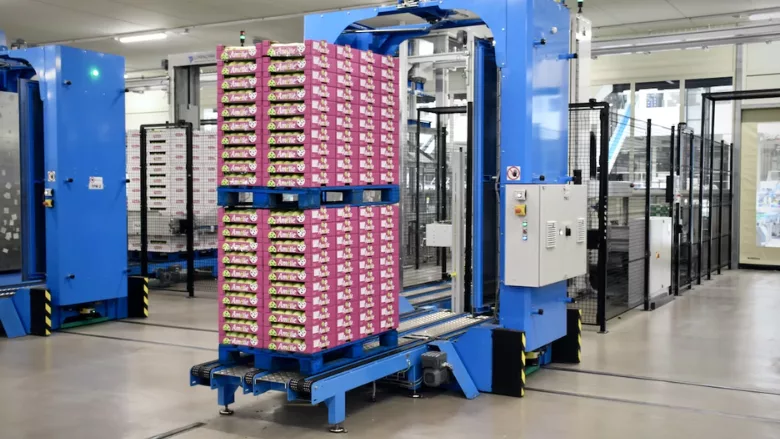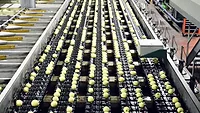How FDA's Traceability Lot Code Requirements Advance Food Traceability

Credit: Arno Senoner via Unsplash
Since the November 2022 release of the U.S. Food and Drug Administration's (FDA's) final rule on Requirements for Additional Traceability Records for Certain Foods, food industry actors have been working to interpret the rule requirements in preparation for compliance in January 2026. Although each component of the rule will drive impactful changes in the food industry, one component stands out—the Traceability Lot Code (TLC).
A code used to identify a specific "lot" or "batch" of product, the TLC is the most important Key Data Element (KDE) required by the rule because it links a food product to each of the events in its supply chain. The limited circumstances under which TLCs can be assigned and the persistent connection to the TLC Source (the entity that assigned the TLC) are key components of the TLC requirements. These requirements aim to enable more efficient outbreak investigations and product containment efforts. Several comments on the draft rule suggested that the TLC requirement is unnecessary given that PO numbers, BOLs, and other commonly used reference documents provide sufficient documentation to link products back to their point of harvest, creation, or transformation.
However, the frequency and size of recalls1 that have plagued the U.S. food supply with consumer illness and product loss over recent years demonstrate that what is sufficient is not necessarily effective in reducing the burden of foodborne illness. FDA countered dissenting comments, stating that, "Requiring documentation of traceability lot codes and related information at different stages of production and distribution will enable us to skip steps in the supply chain, link a food to the firms that have handled it, and ultimately lead us back to the source of the food."2 The increasing length and complexity of global food chains further highlights the critical need for updated practices that allow investigators to "skip" past low-risk handling and storage stages and quickly pinpoint the growing, packing, or processing locations where contamination is more likely to occur.
Expansion Upon the Traditional Lot Code
FDA defines the TLC as "a descriptor, often alphanumeric, used to uniquely identify a traceability lot within the records of the firm that assigned the traceability lot code."2 This definition closely aligns with industry's widespread use of lot codes, but unique identification takes on new meaning given the end-to-end scope of the rule. While traditional lot codes are used to uniquely identify lots within an organization, the TLC must uniquely identify lots within the food system.
Several comments on the draft rule recommended that FDA standardize the format for the TLC. FDA declined the recommendation in favor of providing entities with the flexibility to select a lot coding approach that best suits their operation. This allows those subjected to the rule to define a "lot" with appropriate granularity for their process and then select a lot code format that meets their needs. However, the desire for flexibility conflicts with the unique identification requirement, as it is difficult to ensure universal uniqueness without a standard format that guarantees differentiation. Some processors simply use the production date to assign lot codes; for example, "030623" may be the lot code for a food product created on March 6th, 2023. Given the volume and variety of foods produced daily, the likelihood of unrelated products with identical date-based lot codes is high, especially for downstream actors like distributors and retailers that receive goods from multiple suppliers.
To avoid such situations, FDA encouraged actors to adhere to "several food industry-supported traceability initiatives [that] offer best practices and standards for uniquely identifying a food using a combination of a globally unique product identifier, firm-assigned internal lot code, and standard date code. This information, taken together, could be used as a traceability lot code, provided it meets the definition of "traceability lot code" in § 1.1310 of the final rule."2 This guidance highlights that while the lot codes currently used by industry actors may be used to construct a TLC, most cannot stand alone and meet the definition of a TLC without enhancement.
Lot codes are an integral part of internal traceability protocols among supply chain actors. Comments to the draft rule suggested that to replace current lot coding practice with the more restrictive TLC practice would hamper internal traceability efforts. FDA recognizes that many firms use lot codes for functions outside the scope of the rule and affirms that entities are free to continue using internal lot codes in addition to the required TLC. Although the use of tandem lot codes may prevent disruption of internal tracing efforts, products labeled with multiple lot codes are likely to cause confusion for downstream actors if it is not abundantly clear which lot code is the TLC.
Selective TLC Usage Drives Process Changes
Industry actors are accustomed to having flexibility around if and when to assign a lot code, and while this flexibility remains for internal lot coding practices, the final rule sets forth more restrictive guidelines for the assignment of TLCs. The rule requires that actors assign a TLC only during the initial packing of raw agricultural commodities (RACs), first land-based receiving of wild-caught seafood products, and at transformation events for all commodities on the Food Traceability List (FTL).
Once a TLC has been assigned, the KDEs required at each Critical Tracking Event (CTE) must be linked to the TLC. While this will drive an operational shift for many industry actors, it will have the biggest impact on those performing transformations, as the TLCs of transformation inputs (FTL ingredients) must be linked to the new TLC of the transformed product. A physical transformation through manufacturing or processing often comes to mind at the mention of "transformation," but transformation events also include those that change a food product's packaging. Linking input lot codes to output lot codes through transformation events like commingling or repacking will likely require process changes for many actors in the middle of the supply chain.
The requirement that the TLC be preserved across trading partners that do not perform transformations will impact product handlers (e.g., distributors) most significantly. Actors who ship and receive food must capture and maintain previously assigned TLCs for the products they handle—a change from their current practice of assigning new lot codes upon receipt. Although process changes may cause temporary strain, this change, specifically, will enable investigators to "skip" product handling steps in the supply chain to more quickly identify the source of potentially harmful products in the event of an outbreak or recall.
The TLC Source
Among the KDEs that must be linked to each TLC, the most notable may be the TLC Source. The TLC Source identifies the place where a food was assigned a TLC, which is most often where it was manufactured or transformed—and, thus, where contamination is most likely to occur. Although this data point is critical for outbreak investigation, many industry actors expressed concern over sharing the TLC source with subsequent recipients, as the identity of upstream trading partners and suppliers is often trade-sensitive and closely guarded.
To address these concerns, FDA allows those subjected to the rule to use a TLC Source Reference in place of a TLC Source. This reference provides an alternative method for allowing FDA access to the location of the TLC Source without explicitly revealing that information to other trading partners. It can take the form of an FDA Food Facility Registration Number, a web address, or another unique identifier that can be linked to a location description for the TLC source. By offering this alternative, FDA hopes to balance the industry's data privacy concerns with the critical need to share traceability data.
Collaboration for Success
Those subject to the Traceability Final Rule will benefit from adhering to pre-competitive, collaborative efforts to adopt best practices and standards for unique product identification. GS1, best known for its barcoding system, provides standards for globally unique identification of objects, entities, and locations that could be used to create TLC Source References and universally unique TLCs. Following the TLC structure referenced in FDA commentary and GS1's FSMA 204 Guideline,3 a firm could construct a TLC using a GS1 Global Trade Item Number (GTIN) and an internal lot code. The near-ubiquitous use of GTINs in global retail makes a GS1-based approach to lot coding a practical choice for downstream actors.
Those that do not use GS1 standards may choose to use a URL or a Universally Unique Identifier (UUID) to achieve a unique TLC. UUIDs do not depend on a central registry to guarantee uniqueness. So, although duplication is technically a possibility, the standard, algorithmic approaches to generating UUIDs ensure that the chances of duplication are so low as to be negligible. The absence of central registration authority makes UUIDs a more accessible option for supply chain actors, particularly upstream actors, that may find registry-based methods to be cost-prohibitive.
Supply chain actors and solutions providers need to communicate openly to ensure that they can exchange TLCs digitally. One comment on the draft rule suggested that "because supply chain systems are not fully interoperable, a TLC designated at the beginning of the supply chain may not be compatible with downstream systems."2 While true, interoperability is not strictly necessary to exchange TLC information. Those covered by the rule will need to work collaboratively with their supply chains and solutions providers to ensure that they can receive, record, and interpret all trading partners' TLCs.
TLC Requirements Support Traceability Advancement
Of all the key features of FDA's Traceability Final Rule, the TLC stands out for its criticality and understated complexity. This crucial code serves as a breadcrumb trail, highlighting every step a product takes through the supply chain. To meet the TLC requirements, industry actors will need to make significant modifications to current lot coding practices. While the degree of change required may seem daunting, it is important to note that the food industry has the fundamental systems and technology needed to ensure compliance. Implementing these updated lot coding practices with the other components of the traceability rule will advance traceability practices across industry, saving lives and businesses.
References
- USDA Economic Research Service. "Cost Estimates of Foodborne Illness." March 2, 2023. https://www.ers.usda.gov/data-products/cost-estimates-of-foodborne-illnesses.aspx.
- FDA. "Requirements for Additional Traceability Records for Certain Foods." Federal Register. November 21, 2022. https://www.federalregister.gov/documents/2022/11/21/2022-24417/requirements-for-additional-traceability-records-for-certain-foods.
- GS1 U.S. "Retail Grocery and Foodservice: Application of GS1 System of Standards to Support FSMA 204." March 1, 2023. https://www.gs1us.org/content/dam/gs1us/documents/industries-insights/by-industry/food/guideline-toolkit/GS1-US-Application-of-GS1-System-of-Standards-to-Support-FSMA-204-Guideline.pdf.









